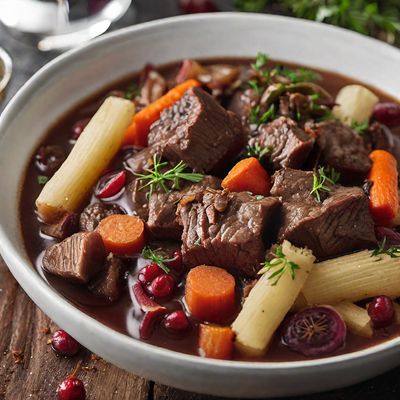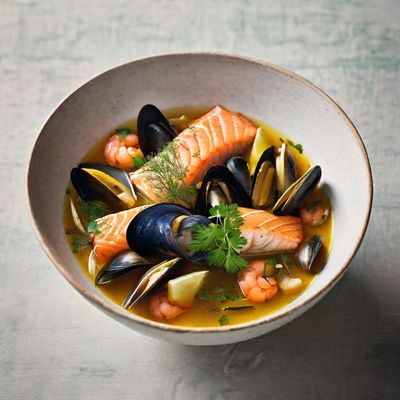
Cuisine
New Nordic cuisine
New Nordic cuisine is characterized by its focus on fresh, local ingredients, and its use of traditional Nordic techniques such as smoking, curing, and pickling. The cuisine is also known for its emphasis on foraging and wild ingredients, such as berries, mushrooms, and game. New Nordic cuisine has been credited with helping to elevate the profile of Nordic cuisine on the global stage, and has inspired a number of other regional and national culinary movements around the world.
Typical ingredients
Fish (salmon, herring, cod), Game (elk, reindeer), Berries (lingonberries, cloudberries), Mushrooms, Seaweed
Presentation and garnishing
New Nordic dishes are often presented in a minimalist style, with simple garnishes and sauces that highlight the natural flavors of the ingredients.
Noma, a restaurant in Copenhagen, is widely considered to be the birthplace of New Nordic cuisine. The restaurant has been named the best restaurant in the world four times by Restaurant magazine. New Nordic cuisine has also inspired a number of other regional and national culinary movements, such as New Nordic by Heart in Portugal and New Israeli cuisine in Israel.
More cuisines from this region...
History
New Nordic cuisine has its roots in the Nordic Food Manifesto, a document published in 2004 by a group of Nordic chefs and food professionals. The manifesto called for a return to traditional Nordic ingredients and techniques, and emphasized the importance of sustainability and seasonality. The movement gained momentum in the following years, with the opening of several high-profile New Nordic restaurants, such as Noma in Copenhagen. Today, New Nordic cuisine is recognized as a major culinary movement, and has inspired chefs and food professionals around the world.
Cultural significance
New Nordic cuisine is an important part of the Nordic cultural identity, and is celebrated at festivals and events throughout the region. The cuisine is also an important part of the region's tourism industry, with many visitors coming to the Nordic countries to sample traditional dishes and learn about the region's culinary traditions.
Health benefits and considerations
New Nordic cuisine is generally considered to be healthy, as it is based on fresh, local ingredients. However, some traditional dishes, such as gravlax (cured salmon), can be high in salt and fat. The cuisine's emphasis on foraging and wild ingredients can also pose risks if not done safely and responsibly.
New Nordic cuisine recipes Browse all »

New Nordic-Style Cheesecake
Nordic Bliss Cheesecake

Beef Wellington
Nordic-inspired Beef Wellington with Root Vegetable Purée

Beef Bourguignon with a New Nordic Twist
Nordic-Inspired Beef Bourguignon: A Modern Twist on a Classic French Dish

New Nordic Sushi
Nordic Fusion Rolls: A Modern Twist on Sushi

New Nordic Bouillabaisse
Nordic Seafood Stew with a French Twist

New Nordic Breakfast
Nordic Morning Delight

Kung Pao Chicken with a Nordic Twist
Nordic Kung Pao Chicken: A Fusion of Flavors

New Nordic Guacamole
Nordic Avocado Delight

New Nordic Chicken Ravioli with Herb-infused Broth
Nordic Fusion: Chicken Ravioli in a Nordic Herb Broth

New Nordic Tiramisù
Nordic Twist Tiramisù: A Modern Take on the Classic Italian Dessert

Tacos al Pastor with a New Nordic Twist
Nordic-Inspired Tacos al Pastor: A Fusion of Flavors

Pavlova with a Nordic Twist
Nordic-Inspired Cloud of Delight